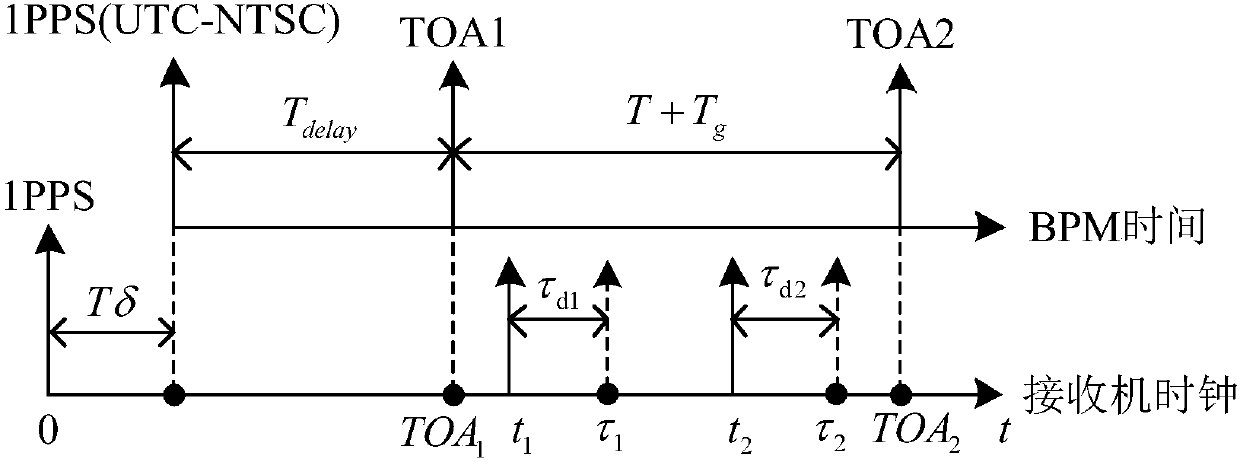BPM shortwave timing signal and timing method based on Chirp signals
A signal and short-wave technology, applied in the field of BPM short-wave timing signals and timing, can solve the problems of unable to receive short-wave timing signals normally, poor anti-channel interference performance, and low timing accuracy, and achieve good anti-Doppler frequency shift, good Anti-multipath fading effect
- Summary
- Abstract
- Description
- Claims
- Application Information
AI Technical Summary
Problems solved by technology
Method used
Image
Examples
Embodiment 1
[0055] refer to figure 1 , the present invention provides an overall design of a timing signal, including the following:
[0056] (1) Keep the original BPM broadcast program and signal format unchanged;
[0057] (2) After the original coordinated time UTC and universal time UT1 signals end, the interval T G1 Insert described time service signal after the time, eliminate the influence to former BPM short-wave time service system user; The time interval T between the time service signal starting moment of described time service signal initial moment and original UTC time number and universal time UT1 time number end moment G1 Not less than 0.1s; the time interval T between the end time of the timing signal and the start time of the original coordinated time UTC time number and universal time UT1 time number G2 shall not be less than 0.1s, and T G2 ≥T G1 .
[0058] (3) The bandwidth of the timing signal must not exceed the available total bandwidth of the original BPM short-...
Embodiment 2
[0089] Utilize the present invention to design a kind of novel timing signal that is applicable and compatible with existing BPM short-wave timing system, and its time domain definition formula can be expressed as:
[0090]
[0091] In the formula:
[0092] (1) The initial time of the UTC time number of the original coordinated time and the UT1 time number of the universal time is the zero time of t;
[0093] (2)C sent (t) represents the time-domain definition formula of the timing signal; A is the signal amplitude, which is used for the transmitter to control the broadcast power; Re( ) represents the real part of the signal; j represents the imaginary unit; f 0 Indicates the carrier frequency, which can be 2.5MHz, 5MHz, 10MHz and 15MHz;
[0094] (3)C D (t)=exp[j(-Kπt2+πBt)], C U (t)=exp[j(-Kπt 2 +πBt)], where B=8000Hz, K=250000Hz / s;
[0095] (4)T a =0.4s; T b =0.432s; T c =0.448s; T d = 0.48s;
[0096] The beneficial effects brought by the above-mentioned design...
PUM
 Login to View More
Login to View More Abstract
Description
Claims
Application Information
 Login to View More
Login to View More - Generate Ideas
- Intellectual Property
- Life Sciences
- Materials
- Tech Scout
- Unparalleled Data Quality
- Higher Quality Content
- 60% Fewer Hallucinations
Browse by: Latest US Patents, China's latest patents, Technical Efficacy Thesaurus, Application Domain, Technology Topic, Popular Technical Reports.
© 2025 PatSnap. All rights reserved.Legal|Privacy policy|Modern Slavery Act Transparency Statement|Sitemap|About US| Contact US: help@patsnap.com



